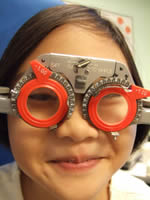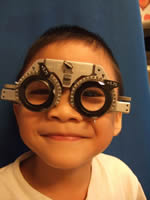†
†
†

†
Shortsightedness, longsightness, far vision, near vision, blur vision, blurred vision, distorted vision, hyperopia, myopia. presbyopia, reading glasses, spectacles, glasses, contact lens, LASIK, LASEK, PRK, Laser, Refraction, Refractive errors, Mypoic Refraction, Hyperopic Refraction, Presbyopic Refraction, poor eyesight, laser correction, vision not clear, cannot see clearly. mist eyes, cloudy vision, eye strain, eye pain, Kajang, Seri Kembangan, Serdang, Semenyih, Bandar Baru Bangi, Putrajaya, Bangi Lama, Serdang Lama, Broga, Cyberjaya, Mantin, Broga, Dengkil, Nilai, Beranang, Sepang, Salak Tinggi, Pajam, Sungai Pelek
†
†
†

†
†
†
†
†
ACS Eye Specialist Centre
95G & 97G Jalan TKS 1,
Taman Kajang Sentral,
43000 Kajang,
Selangor, Malaysia.
Tel: 03-82116078
Waze or Google Map
Refractive Errors
Myopia, Hyperopia, Astigmatism, Presbyopia
What is a refractive error?
When light enters our eyes and it is not well focused, this results in blurring of vision and is called a refractive error.
There are several types of refractive errors. A person may experience one or a combination of refractive errors as listed below.
Myopia (shortsightedness, nearsightedness)
A myopic person is able to see near objects clearer compared to distant objects. Near objects are sharp and distinct.
Hyperopia (longsightedness, farsightedness)
Distant objects are clearer than close ones. Objects far away are sharp and distinct.
Astigmatism
If the eyeball surface (cornea) is not perfectly round but more oval in shape, astigmatism can result. This results in light rays focusing at more than one single point at the back of our eye causing distorted/blurred vision.
Presbyopia
This is the inability to focus near as a result of aging, commonly occurring around 40 years old and above. Previously reading and looking at close objects was not causing any eyestrain, but with age (normally at 40 years and older), close vision starts to blur and one needs to place it further away to read or look at.
Consequences of untreated refractive errors
In children untreated refractive errors result in blurred vision and the inability to perceive the world clearly. The term amblyopia or lazy eyes applies when children are not treated for refractive errors, resulting in them continuing to have blur vision until adulthood. This blur vision is permanent even with optical aids (spectacles, glasses) or surgery/laser (LASIK, LASEK, PRK). This results in a visual handicap, denying the child a choice in careers that require good vision.
For adults untreated refractive errors result in poor eyesight. This causes headaches, eyestrain, tired eyes and reduction of work productivity. Blur/distorted vision is detrimental to road safety for the driver and other road users. Poor vision affect all aspects of our daily living activities
What can be done for refractive errors?
Spectacle correction is the most common method of correction. Some children may need cycloplegic refraction due to their inability to fully relax their eyes and thus give an inaccurate power reading. Refer to an ophthalmologist so see whether your child needs this to be done.
Contact lenses are popular among those who can afford it and who donít like wearing glasses. However if one has problems with contact lens wear e.g. red eyes, donít continue wearing them and immediately seek an eye doctorís treatment.
Surgical/ Laser (LASIK, LASEK, PRK) correction is another option. However one should have proper counseling from an ophthalmologist before undertaking this procedure. Failure to understand the side effects of surgery/laser can lead to unhappiness and frustration after the surgery. Also beware of marketing ploys that promise perfect vision with no long term complications after any form of laser correction because this is simply just to lure you into doing the procedure without any proper understanding of what youíre in for in the long term.
Other causes of blurred vision
Refractive errors are not the only cause of blurred vision. Many eye diseases may cause blurred vision, some of them are- cataract, glaucoma, ARMD, diabetic retinopathy, nerve problems, inflammation, infection, eye injuries, dry eyes and retinal detachment.
Therefore if blur or distorted vision cannot be corrected by refractive aids (spectacles, contact lenses) please seek a consultation with an eye doctor (ophthalmologist).